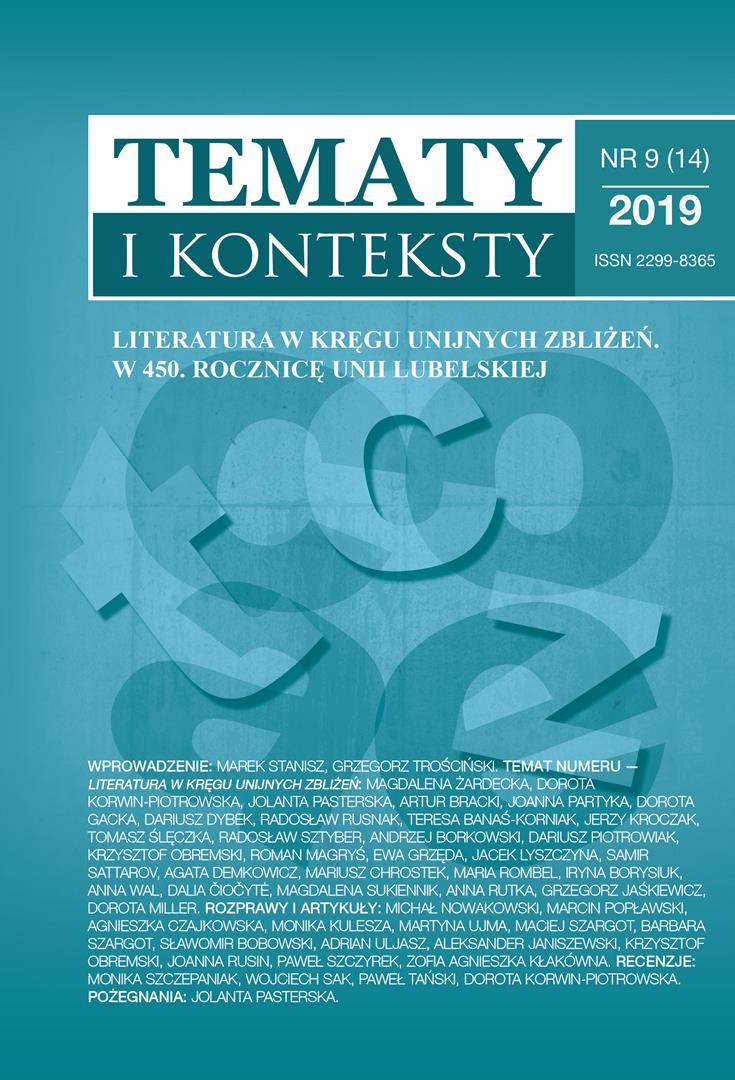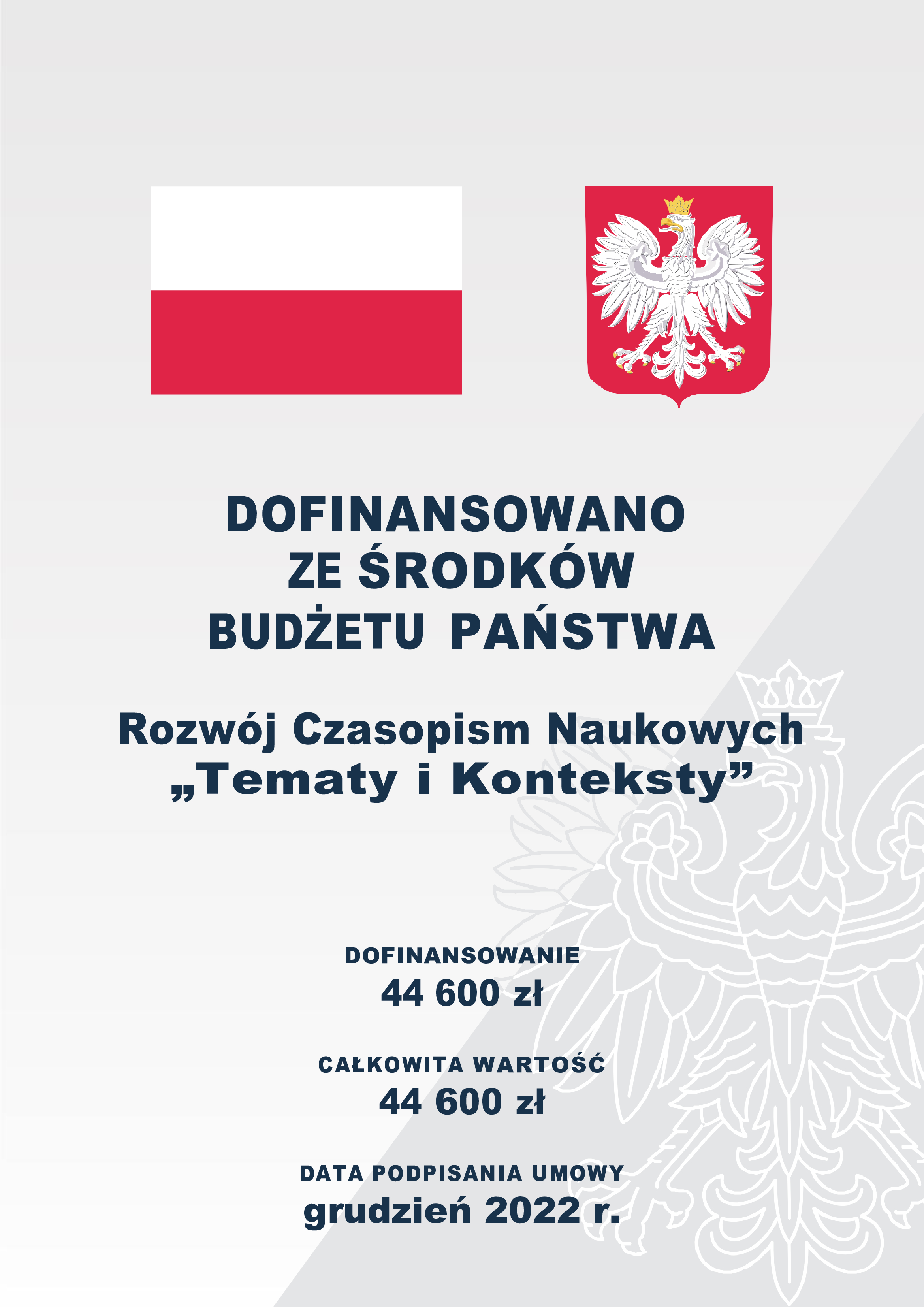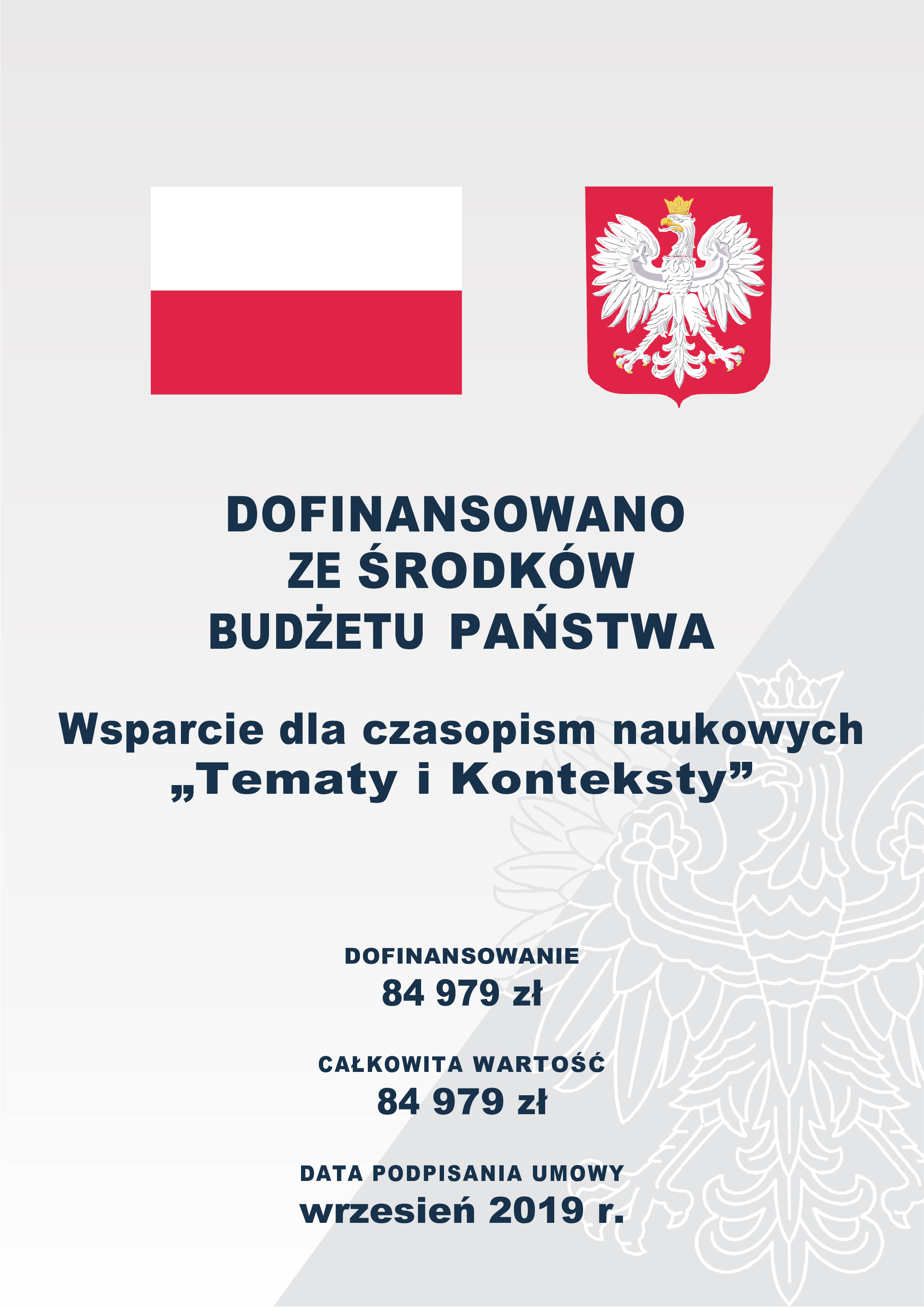Berlin as the Lens of Contemporary Europe. Remarks on the Book Deutsche nasz. Reportaże berlińskie by Ewa Wanat
DOI:
https://doi.org/10.15584/tik.2019.27Keywords:
agora, democracy, dialogue, gastarbeiter, different, conflict, metropolis, bridge, stranger, borderline, tolerance, communityAbstract
Berlin and the city’s inhabitants are the characters of Wanat’s reportage. The book is a collection of talks and evidence record of meetings with particular people. Every Berliner has their own story. While presenting the stories, the author spotlights the complexity of the city.
The capital city, like any other metropolis, is a medley of various cultures and behaviours. The city reflects the borderline of the features which both unite and divide the society and endanger their peaceful coexistence. The border areas are particularly exposed to conflicts. For onlookers, Berlin seems to be a coherent mosaic. However, it is drastically divided. This incoherence is shown in varied characters of the districts, it is reflected in language, too. Resentments, stereotypes and generalisations add to this discrepancy. A peaceful coexistence in such a cosmopolitan hybrid city requires building an agora and bridges. They create the background to begin a dialogue. Liberal democracy helps to introduce socio-cultural structures, as well as mental patterns of perception. This prevents antagonisms in society. A lesson of tolerance averts hostility and others are not treated as if they were strangers. Learning an appropriate attitude towards the dissimilar takes a long time, and the challenge must be repeatedly undertaken if society is to remain united. Analysing such a big city as Berlin, Ewa Wanat illustrates complex problems of contemporary Europe.
Downloads
References
Drozdowski R., Trzy rozumienia pogranicza, „Pogranicze. Polish Borderlands Studies” 2014, t. 2, nr 1.
Podręcznik dialogu. Zaufanie i tożsamość, red. K. Czyżewski, J. Kulas, M. Golubiewski, Sejny 2012.
Wanat E., Deutsche nasz. Reportaże berlińskie, Warszawa 2018.
Downloads
Published
How to Cite
Issue
Section
License
Copyright (c) 2019 Tematy i Konteksty

This work is licensed under a Creative Commons Attribution-NonCommercial-NoDerivatives 4.0 International License.




